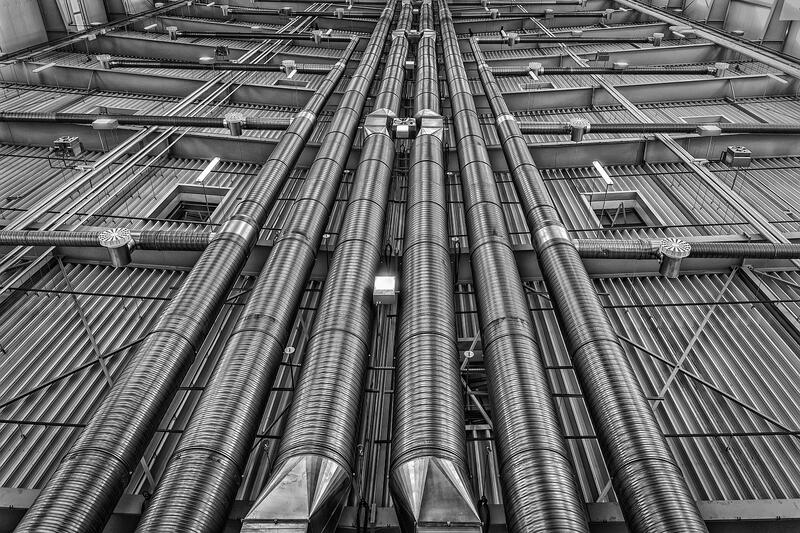Exploring Decarbonization Strategies for Steam and air conditioning supply
This article discusses different decarbonization strategies for steam and air conditioning supply, exploring options for reducing carbon emissions in these industrial processes.

Decarbonisation is the process of reducing carbon emissions in various sectors of the economy. The steam and air conditioning supply sector is one of the major contributors to carbon emissions, accounting for around 5% of global carbon emissions. Decarbonisation in this sector is critical to achieving the global target of limiting global warming to below 2°C. In this article, we will explore what decarbonisation in the steam and air conditioning supply sector entails, why it is important, the main sources of carbon emissions in the sector, how we can reduce carbon emissions, the challenges facing decarbonisation, and the implications of decarbonisation for the sector.
What is decarbonisation in the "Steam and air conditioning supply" sector and why is it important?
Decarbonisation in the steam and air conditioning supply sector involves reducing carbon emissions associated with the production and distribution of steam and air conditioning services. This can be achieved through the use of renewable energy sources, energy efficiency measures, and the adoption of low carbon technologies.
Decarbonisation is important because the steam and air conditioning supply sector is a major contributor to carbon emissions. According to the International Energy Agency (IEA), the sector accounts for around 5% of global carbon emissions. This makes it a significant contributor to climate change, which is one of the biggest challenges facing the world today. Decarbonisation in this sector is critical to achieving the global target of limiting global warming to below 2°C.
What are the main sources of carbon emissions in the "Steam and air conditioning supply" sector?
The main sources of carbon emissions in the steam and air conditioning supply sector include:
- Fossil fuel combustion: The combustion of fossil fuels such as coal, oil, and natural gas is the primary source of carbon emissions in the sector. Fossil fuels are used to generate steam and electricity for air conditioning.
- Refrigerants: The use of refrigerants in air conditioning systems is another source of carbon emissions. Refrigerants such as hydrofluorocarbons (HFCs) have a high global warming potential and contribute to climate change.
- Energy consumption: The energy consumption associated with the production and distribution of steam and air conditioning services is another source of carbon emissions. This includes the energy used to power pumps, fans, and other equipment.
How can we reduce carbon emissions in the "Steam and air conditioning supply" sector?
There are several ways to reduce carbon emissions in the steam and air conditioning supply sector. These include:
- Renewable energy: The use of renewable energy sources such as solar, wind, and geothermal energy can help to reduce carbon emissions in the sector. Renewable energy can be used to generate steam and electricity for air conditioning.
- Energy efficiency: Improving energy efficiency in the production and distribution of steam and air conditioning services can help to reduce carbon emissions. This includes the use of energy-efficient equipment, insulation, and reducing heat losses.
- Low carbon technologies: The use of low carbon technologies such as heat pumps, combined heat and power (CHP), and district heating can help to reduce carbon emissions in the sector.
- Refrigerant management: The use of low global warming potential refrigerants and the proper management of refrigerants can help to reduce carbon emissions in the air conditioning sector.
What are the challenges facing decarbonisation in the "Steam and air conditioning supply" sector?
There are several challenges facing decarbonisation in the steam and air conditioning supply sector. These include:
- Cost: The cost of decarbonisation can be a significant barrier to adoption. Renewable energy and low carbon technologies can be more expensive than traditional fossil fuel-based technologies.
- Infrastructure: The infrastructure required for decarbonisation, such as renewable energy generation and distribution networks, may not be available in all areas.
- Technical challenges: The adoption of low carbon technologies may require significant technical expertise and may not be suitable for all applications.
- Regulatory barriers: Regulatory barriers such as subsidies for fossil fuels and lack of incentives for renewable energy adoption can hinder decarbonisation efforts.
What are the implications of decarbonisation for the "Steam and air conditioning supply" sector?
Decarbonisation has several implications for the steam and air conditioning supply sector. These include:
- Job creation: The adoption of renewable energy and low carbon technologies can create new job opportunities in the sector.
- Energy security: The use of renewable energy sources can improve energy security by reducing dependence on fossil fuels.
- Cost savings: The adoption of energy efficiency measures and low carbon technologies can lead to cost savings for consumers and businesses.
- Environmental benefits: Decarbonisation can lead to significant environmental benefits, including reduced carbon emissions, improved air quality, and reduced dependence on non-renewable resources.
Conclusion
Decarbonisation in the steam and air conditioning supply sector is critical to achieving the global target of limiting global warming to below 2°C. The sector is a major contributor to carbon emissions and reducing these emissions is essential to tackling climate change. Decarbonisation can be achieved through the use of renewable energy sources, energy efficiency measures, and the adoption of low carbon technologies. However, there are several challenges facing decarbonisation efforts, including cost, infrastructure, technical challenges, and regulatory barriers. The implications of decarbonisation for the sector include job creation, energy security, cost savings, and environmental benefits.